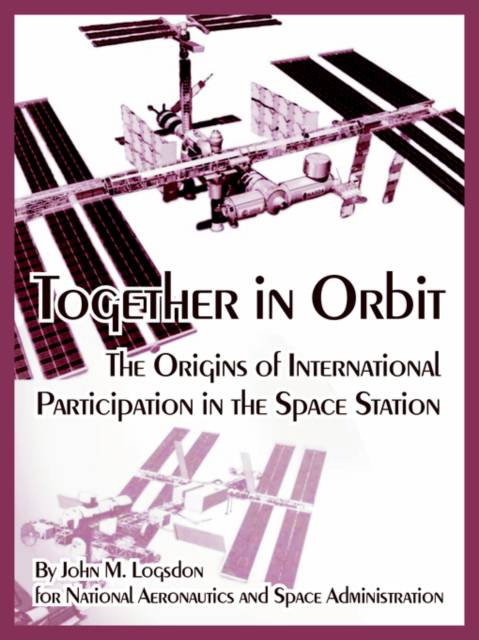
- Afhalen na 1 uur in een winkel met voorraad
- Gratis thuislevering in België vanaf € 30
- Ruim aanbod met 7 miljoen producten
- Afhalen na 1 uur in een winkel met voorraad
- Gratis thuislevering in België vanaf € 30
- Ruim aanbod met 7 miljoen producten
Zoeken
Together in Orbit
The Origins of International Participation in the Space Station
John M Logsdon, N a S a
€ 33,95
+ 67 punten
Omschrijving
From virtually the beginning of the twentieth century, those interested in the human exploration of space have viewed as central to that endeavor the building of an Earth-orbital space station that would serve as the jumping-off point to the Moon and the planets. Always, space exploration supporters believed, a permanently occupied space station was a necessary outpost in the new frontier of space. The more technically minded recognized that once humans had achieved Earth orbit about 250 miles above the surface---the presumed location of any space station---the vast majority of the atmosphere and the gravity well would have been conquered, and then human beings were about halfway to anywhere they might want to go. Space station advocates also recognized that the scientific and technological challenge of building an Earth-orbital space station was daunting and that pooling the resources of many of the spacefaring nations of the world would maximize the probabilities of success. Thus, when the space station project was born in the in the mid-1980s, it almost immediately became an international program. This monograph describes the process of conceptualizing the international partnership and crafting its contours.
Specificaties
Betrokkenen
- Auteur(s):
- Uitgeverij:
Inhoud
- Aantal bladzijden:
- 64
- Taal:
- Engels
- Reeks:
- Reeksnummer:
- nr. 11
Eigenschappen
- Productcode (EAN):
- 9781410224538
- Verschijningsdatum:
- 29/06/2005
- Uitvoering:
- Paperback
- Formaat:
- Trade paperback (VS)
- Afmetingen:
- 210 mm x 279 mm
- Gewicht:
- 167 g

Alleen bij Standaard Boekhandel
+ 67 punten op je klantenkaart van Standaard Boekhandel
Beoordelingen
We publiceren alleen reviews die voldoen aan de voorwaarden voor reviews. Bekijk onze voorwaarden voor reviews.











